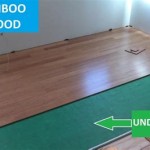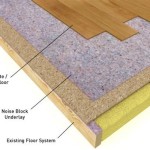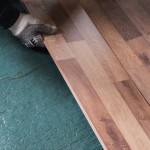Can You Install LifeProof Flooring Over Concrete Floor?
LifeProof flooring, known for its durability and water-resistance, is a popular choice for homeowners seeking a stylish and practical flooring option. A common question that arises is whether it can be installed directly over a concrete floor. The answer is yes, but it's not as straightforward as it may seem. Numerous factors must be considered before proceeding with the installation. This article explores the process of installing LifeProof flooring over a concrete floor, highlighting key considerations and steps for successful installation.
Assessing the Concrete Subfloor
The foundation of a successful LifeProof flooring installation lies in a properly prepared concrete subfloor. Before starting the installation, a thorough assessment is crucial. The concrete floor should be:
- Level: Unevenness in the concrete can lead to uneven flooring and potential problems. It's recommended to have a maximum height difference of 1/8 inch over a 10-foot span.
- Clean: The concrete floor must be clean and free of debris, dust, grease, and other contaminants. This includes removing any loose or flaking paint or coatings. A thorough cleaning with a power washer or a combination of cleaning agents can be necessary.
- Dry: Moisture is the enemy of most flooring materials, including LifeProof flooring. The concrete floor must be completely dry. This means allowing sufficient drying time after any cleaning or repairs.
- Strong: The concrete must be sound and strong to support the weight of the flooring. If it's cracked or has other structural issues, these need to be addressed before the installation begins.
If the concrete floor doesn't meet these criteria, corrective measures should be taken, such as leveling the floor using self-leveling concrete or patching any cracks or holes. These steps ensure a smooth and stable foundation for the LifeProof flooring.
Choosing the Right Installation Method
There are two primary methods for installing LifeProof flooring over concrete:
- Glued Down Installation: This method involves applying a strong adhesive directly to the concrete subfloor and securing the LifeProof planks to it. Glued-down installation is a popular option due to its stability and resistance to movement. This method is particularly suitable for areas with moderate to high foot traffic.
- Floating Installation: Floating installation involves laying the LifeProof planks directly over an underlayment that's installed over the concrete floor. The planks are joined together using a click-and-lock system. This method allows for some expansion and contraction of the flooring due to changes in temperature and humidity. Floating installation is often preferred for rooms with lower foot traffic or in areas where the concrete subfloor may not be perfectly level.
Choosing the right installation method depends on several factors, including the condition of the concrete floor, the level of foot traffic, and the desired level of stability. Consulting a flooring professional can offer expert guidance on the most appropriate method for your specific situation.
Understanding Moisture Barrier Considerations
Concrete subfloors can be susceptible to moisture issues, which can negatively impact the performance of LifeProof flooring. Moisture barriers are essential to prevent moisture from seeping up from the concrete and damaging the flooring.
Here are some key points regarding moisture barriers:
- Type of Barrier: Different types of moisture barriers are available, such as polyethylene sheeting, rubberized asphalt, or specialized moisture-resistant underlayment. The type of barrier chosen should be appropriate for the specific installation conditions.
- Installation: Moisture barriers should be installed carefully and securely. Overlapping seams should be taped to ensure a continuous barrier.
- Testing: Before installing the LifeProof flooring, a moisture test is recommended to assess the concrete's moisture content. This test determines whether the concrete is sufficiently dry for installation, and the moisture barrier is effectively preventing moisture vapor transmission.
Properly installed moisture barriers can provide long-term protection against moisture damage and ensure the longevity of your LifeProof flooring.

How To Install Vinyl Plank Flooring Lifeproof Over Concrete

Lvp Flooring Installation Over Concrete Subfloor Full Instructional Builds By Maz Flooret

Tips For Installing Vinyl Plank Over Concrete Floors Lemon Thistle

Why We Chose Lifeproof Vinyl Flooring And How To Install It

Why We Chose Lifeproof Vinyl Flooring And How To Install It

How To Install Lifeproof Flooring The Home

How To Install Lifeproof Flooring The Home

Why We Chose Lifeproof Vinyl Flooring And How To Install It

Installing Vinyl Plank Flooring Lifeproof Waterproof Rigid Core Sustain My Craft Habit

How To Install Lifeproof Vinyl Flooring
See Also







